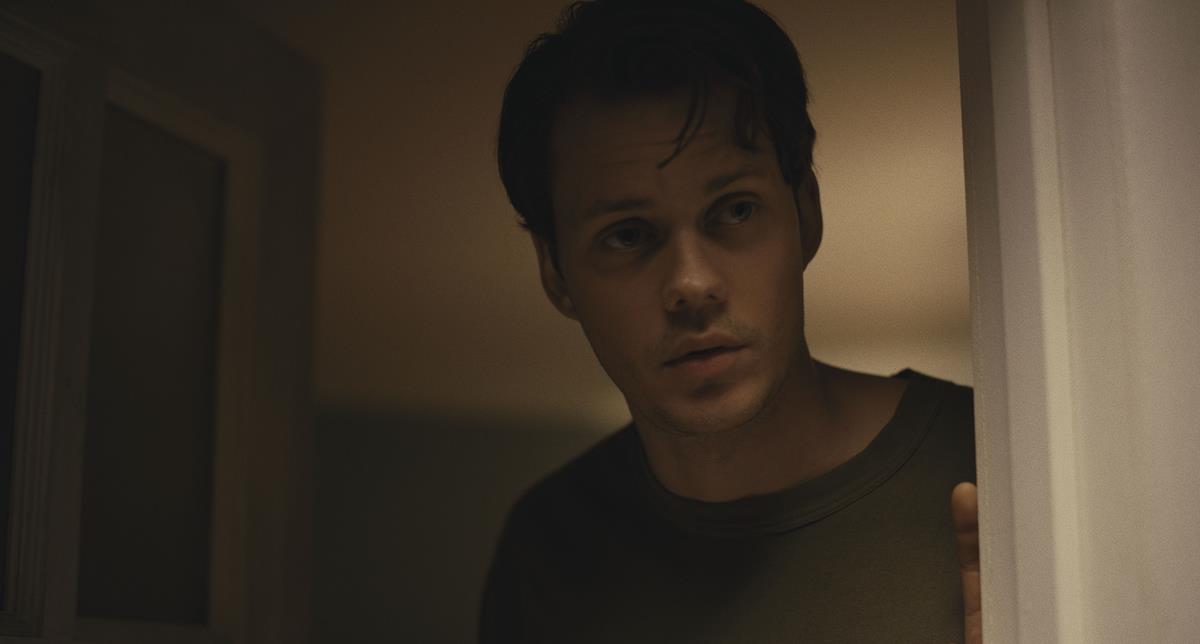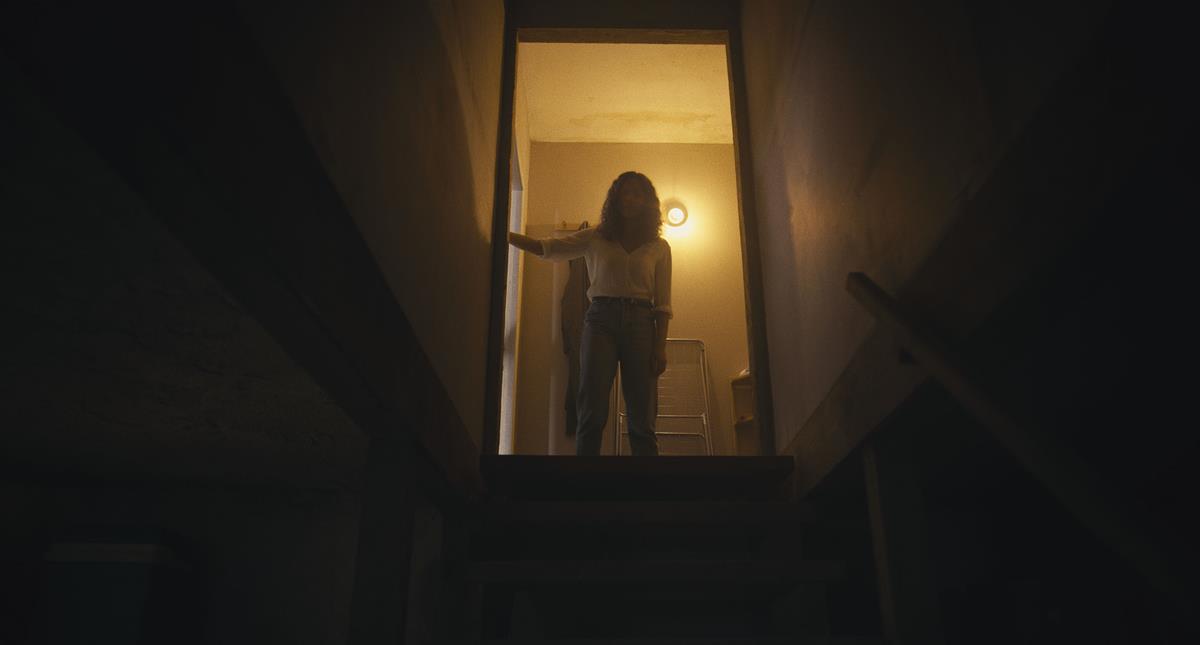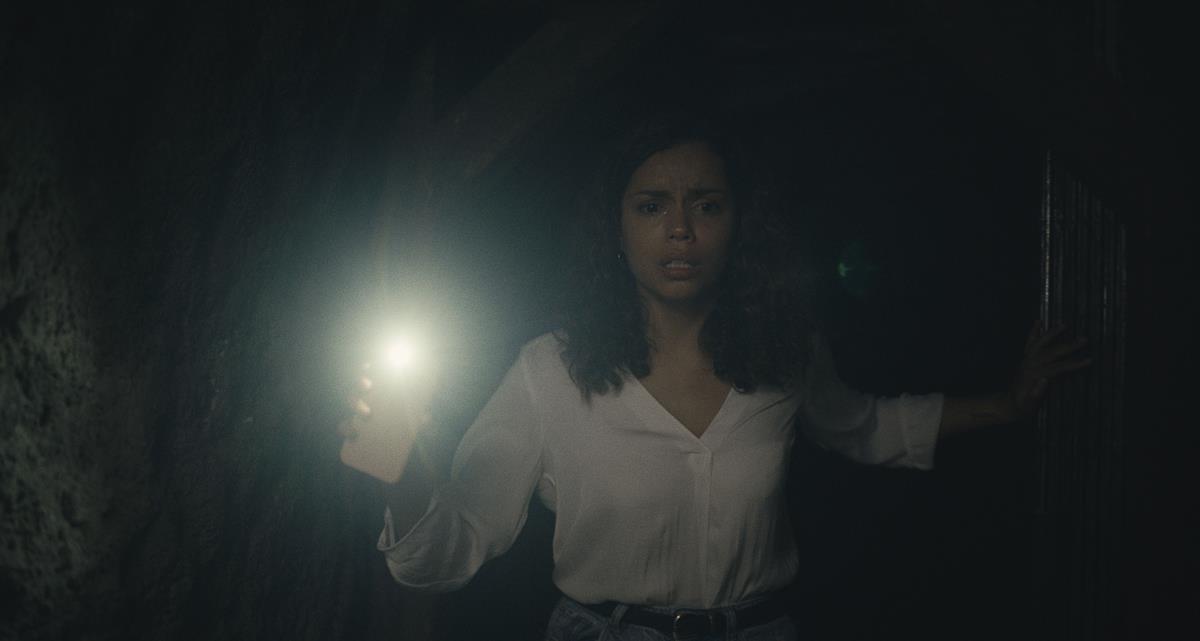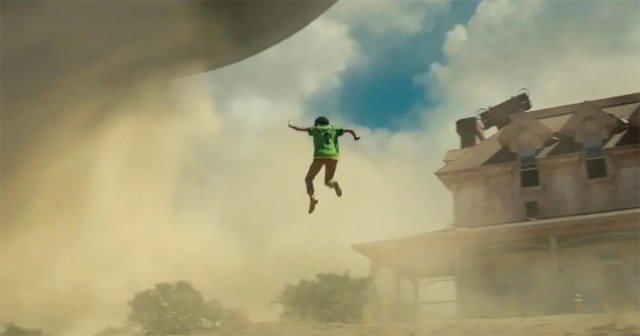TL;DR
- “Barbarian” is a below-the-radar title whose shocks and twists have made it a sizeable hit. DP Zach Kuperstein explains how he created the look for a Detroit-set story filmed on a farm in Bulgaria.
- The visual language for the film is based largely on the work of David Fincher and Sam Raimi, with an Austrian horror movie “Angst” influencing the flashback sequences.
- Produced by BoulderLight Pictures for $4.5 million, the horror film has made more than $43 million internationally since its release in September.
One of the most twist-filled and twisted movies of the year, Barbarian has become a sleeper hit. Produced by BoulderLight Pictures for just $4.5 million, the horror film has raked in more than $43 million internationally since it was released in September, and is now streaming on HBO Max.
A large part of its success can be attributed to the film’s look, which mixes Sam Raimi with David Fincher, according to the film’s cinematographer Zach Kuperstein.
“For Fincher, we looked at Mindhunter and Se7en as our two points of reference,” he told Matt Mulcahey at Filmmaker Magazine. “The main takeaway was that we wanted to have all the camera movement motivated and have it feel in sync with the characters. Then Raimi is just all over the place with the camera. Evil Dead was the most extreme version of that, but [we also watched] Drag Me to Hell. That movie is just wild with the camera movement. It’s constantly fast push-ins or canted angles.”
READ MORE: Fincher Upstairs, Raimi Downstairs: DP Zach Kuperstein on Barbarian (Filmmaker Magazine)
The setup for Barbarian: What do you do when you’re stranded at an Airbnb and the house is double-booked with a stranger?
The film stars Georgina Campbell, Bill Skarsgård and Justin Long, and is the second feature from comedian turned writer-director Zach Cregger.
“I don’t think horror and comedy are too dissimilar,” Cregger told William Earl at Variety. “The anatomy of a scare is very similar to the anatomy of a laugh. It’s all about timing and tone and zigging when the audience expects you to zag. I feel like my time in sketch comedy has equipped me to play in this pool.”
READ MORE: Barbarian’ Director Zach Cregger on Making the Year’s Most Shocking Horror Movie and Jordan Peele’s Advice (Variety)
Although set in a decaying Detroit neighborhood, Barbarian was mostly shot in an empty Bulgarian farm transformed into entire run-down subdivision (interiors were built at Sofia Studios).
We learn from Jim Hemphill at IndieWire that Bulgarian production designer Rossitsa Bakeva created a street with facades placed to accommodate Kuperstein and Cregger’s pre-planned camera angles (the entire film was meticulously storyboarded), and Kuperstein took advantage of a preexisting element of the farm for the film’s climax.
“In the script, the last scene took place on the roof of a church,” Kuperstein recalled, “but there was a silo there, and I just said, ‘Can we just forget the church and make this a silo scene?’ As soon as it came out of my mouth, I thought they were all going to think it was a stupid idea, but Zach said, ‘That’s great. Let’s do that.’”
Since it was too dangerous to put actors on top of the silo, the art department built a full-size replica of the roof on a stage and Kuperstein found an effective, lo-fi way of creating his exterior. “We surrounded the silo with 270-degrees of black fabric, poked a bunch of holes in it and backlit it, and it looked great,” Kuperstein said.
READ MORE: Fincher Upstairs, Raimi Downstairs: The Cinematography of ‘Barbarian’ (IndieWire)
The DP worked with Light Iron senior colorist Sam Daley to define the show’s look. To give Daley an idea of what he and Cregger wanted, Kuperstein assembled a look book of photographic references including stills from the features Prisoners, Gone Girl and Sicario for night interiors, It Comes at Night for flashlight scenes, and American Beauty, Pleasantville and Austrian cult horror Angst for a 1980s flashback sequence.
“Texturally we tried to keep it limited,” the cinematographer explains in an interview on the Panavision website. “I find it best to keep the references really tight because otherwise it’s hard to articulate exactly what it is about each image that is related to the color.”
READ MORE: A Look Beyond Horror (Panavision)
Using DaVinci Resolve Studio, Daley created a custom LUT for production in Bulgaria, but when the final grade began, he provided looks to Kuperstein and director Cregger. “I showed them different visual interpretations of the story, some pushing into the horror genre, others more traditional,” Daley told Blackmagic Design. “The Zachs (Kuperstein and Cregger) chose a more traditional look for the finish. I think that’s partly why the look of the film stands out; we’re not announcing to the audience that this is a horror movie via the color grade.”
The tight, dark spaces in the basement of the house created challenges not only for those dynamic camera moves (many of which Kuperstein operated handheld), but also in terms of lighting.
“I hate it in movies where there’s a flashlight scene and somehow there’s other light in the space,” Kuperstein tells IndieWire. “We did experiment with backlight in the tunnel, but it just looked fake.”
In order to shoot with the lowest possible light levels, Kuperstein chose the Sony Venice and directed the actors to light the scenes themselves with their flashlights, directing them to hold the flashlights in ways that would get the proper bounce off the wall or light the sides of their heads.
“I was very concerned about [Justin Long’s] flashlight in prep,” he tells Filmmaker Magazine. “I wanted to make sure that we had one that was a good-looking prop but was also bright enough and controllable so we could dial it in. Either the set decorator or one of the prop guys suggested this LED puck light that’s maybe three inches across called the Ape Labs Coin. It was battery powered and remote controllable. That was super helpful, because we were changing lenses and ISOs and needed the flashlight to be different brightnesses at different times. The art department found a flashlight, pulled out the guts of it and mounted that puck light inside.”
In these scenes the filmmakers wanted the audience to feel the claustrophobia of the space, but didn’t want the actors disappearing into the walls. Daley explained that he graded for the actors’ faces and let the flashlights clip a bit, “as if your pupils are struggling to see what lurks in the shadows and not what the light is illuminating.”
READ MORE: Horror Film Barbarian Graded in DaVinci Resolve Studio (Blackmagic Design)
One of the more unique aspects of the film is its narrative structure, which introduces the female lead in act one and then resets itself with a male lead in act two. This unconventional approach to storytelling was a sticking point during Cregger’s attempts to sell the film.
“Oh, it was [a point of contention] for everybody. It took me two years to get anyone interested in this,” Cregger tells Brian Davids at The Hollywood Reporter. “I just kept hearing the same things: ‘You can’t introduce a character on page 50. We’re following a rapist for 30 pages; that’s just too gross.’ So I knew that these were all barriers to entry, but I also knew that these things that everyone was picking on were my favorite things about the movie.”
READ MORE: ‘Barbarian’ Filmmaker Zach Cregger Pulls Back the Curtain on the Film’s Many Secrets (The Hollywood Reporter)
The film came to Disney as part of its acquisition of Fox and the studio decided to release the movie nationwide after strong word-of-mouth — even if this subversive movie goes against the Mouse House’s brand image.
“If the first part of the film is about a woman being hyper aware, and her brain is working overtime to categorize behavior and assess threat, then the inverse would be a predator with no awareness,” Creggar explained to Erik Piepenburg at The New York Times. “I wanted to structure the movie as two mirror images that converge.”
In the same interview he talks about Angst, the 1983 horror feature that made quite an impression on him. “That’s a hard-core film,” he says. “I saw it in my basement when I was a teenager. It tricked me. It lulled me into thinking it was one movie and then it punched me in the face. I felt betrayed and violated by it. I went through an experience that was deeper than watching a movie. It was so fun and radical and exciting. I love the idea that movies can be Trojan horses.”
READ MORE: A Walk Through the ‘Barbarian’ Basement With Zach Cregger (The New York Times)
Next, Watch This
LIGHTS, CAMERA, ACTION! SPOTLIGHT ON FILM PRODUCTION:
From the latest advances in virtual production to shooting the perfect oner, filmmakers are continuing to push creative boundaries. Packed with insights from top talents, go behind the scenes of feature film production with these hand-curated articles from the NAB Amplify archives:
- “Decision To Leave:” Park Chan-wook’s Love Story/Detective Story
- Fantastic Fantasía: Making Alejandro González Iñárritu’s “Bardo”
- “The Banshees of Inisherin:“ Martin McDonagh Tells a Wonderful/Terrible Tale
- Control and Chaos: Todd Field on “Tár”
- Family Pictures: James Gray’s “Armageddon Time”
- She Stoops to Conquer: Gina Prince-Bythewood Goes to War for “The Woman King”
- The Revolution Will Be Televised: Making the Immersive, Explosive “Athena”








